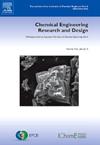Tree-based machine learning for predicting Neochloris oleoabundans biomass growth and biological nutrient removal from tertiary municipal wastewater
IF 3.7
3区 工程技术
Q2 ENGINEERING, CHEMICAL
引用次数: 0
Abstract
Recently, computational models have been increasingly recognized as valuable tools for addressing key challenges in the operational performance of biological wastewater treatment facilities. In this study, tree-based machine learning approaches, such as decision tree regressor (DTR) and extra tree regressor (ETR), were developed to predict microalgae (Neochloris oleoabundans) biomass growth, culture pH, and nutrient removal efficacy (total nitrogen, TN and total phosphorus, TP) for the first time. The experimental data was obtained through a central composite design (CCD) matrix, and Bayesian optimization was applied to fine-tune the models’ hyperparameters. Model performance was evaluated using indicators such as the coefficient of determination (R²), mean absolute error (MAE), and mean-squared error (MSE). The results showed comparable performance between the DTR and ETR models. For TN removal during testing, the R² values for DTR and ETR were 0.9262 and 0.9789, respectively, with DTR (MSE: 0.00895, MAE: 0.0615) and ETR (MSE: 0.00255, MAE: 0.0352) demonstrating reliable predictions. Overall, the ETR model outperformed DTR in predicting responses. The models' generalization capabilities were also assessed by introducing variations in environmental factors.
基于树状结构的机器学习用于预测油菜新孢子虫的生物量增长和三级城市污水中的生物营养去除率
近来,人们越来越认识到,计算模型是应对生物废水处理设施运行性能方面关键挑战的宝贵工具。本研究首次开发了基于树的机器学习方法,如决策树回归器(DTR)和额外树回归器(ETR),用于预测微藻(Neochloris oleoabundans)的生物量生长、培养 pH 值和营养物去除效果(总氮 TN 和总磷 TP)。实验数据通过中央复合设计(CCD)矩阵获得,并应用贝叶斯优化技术对模型的超参数进行微调。使用判定系数(R²)、平均绝对误差(MAE)和均方误差(MSE)等指标对模型性能进行了评估。结果显示,DTR 和 ETR 模型的性能相当。对于测试期间的 TN 清除,DTR 和 ETR 的 R² 值分别为 0.9262 和 0.9789,DTR(MSE:0.00895,MAE:0.0615)和 ETR(MSE:0.00255,MAE:0.0352)显示出可靠的预测。总体而言,ETR 模型在预测反应方面优于 DTR。还通过引入环境因素的变化来评估模型的泛化能力。
本文章由计算机程序翻译,如有差异,请以英文原文为准。
求助全文
约1分钟内获得全文
求助全文
来源期刊

Chemical Engineering Research & Design
工程技术-工程:化工
CiteScore
6.10
自引率
7.70%
发文量
623
审稿时长
42 days
期刊介绍:
ChERD aims to be the principal international journal for publication of high quality, original papers in chemical engineering.
Papers showing how research results can be used in chemical engineering design, and accounts of experimental or theoretical research work bringing new perspectives to established principles, highlighting unsolved problems or indicating directions for future research, are particularly welcome. Contributions that deal with new developments in plant or processes and that can be given quantitative expression are encouraged. The journal is especially interested in papers that extend the boundaries of traditional chemical engineering.
 求助内容:
求助内容: 应助结果提醒方式:
应助结果提醒方式:


